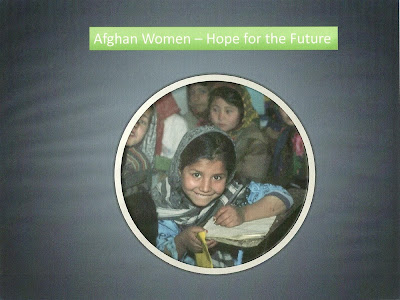•Resource Consultant Role
•Sensitizer Role
•Teacher Trainer Role
•Cooperator Role
Process
•Promotes reflection thinking, problem solving on person: environment transactions; including client’s role in them and the experience of oppression.
•Assesses ego functioning and provides ego-supportive interventions to bolster client’s strengths
•Collaborating work together to seek change of oppressive conditions.
Coping and Adapting
•Adequate Person: Environment Transactions
–Motivation (incentives and rewards by environment)
–Problem solving skills (strength and efficacy of society’s socializing institutions, i.e., family and schools
–Maintenance of psychic comfort (managing feelings)
–Self-esteem (emotional and other support provided by the environment
–Self-direction (provision of information, choices and adequate time and space.
Empowering Skills to Bolster Motivation
•Basic needs must be met (food, housing, clothing, financial and emotional support) in order for motivation to be sustained.
–SW and client work to gain resources and opportunities and attend to presenting problems
–SW use clients’ own words about his/her problems and accept the client’s definition of their problem
–SW reach for and convey understanding of feelings of difference, isolation, alienation, being misunderstood, as well as discrimination at the hands of systems needed to sustain life and growth.
Continuation of skills to bolster motivation…
•Group together the stressful demands into workable segments
–Explore how they have dealt with these stress/problems before
–Have the client name and own his/her strengths
–Provide a vision and begin to enlist the client’s energy around that vision
–Appropriately self-disclose
–Negotiate with the system that is oppressing
To Maintain Psychic Comfort and Self-esteem
•SW-co-teacher role and critical educator
–SW helps client identify and own his/her group’s achievements
–Heighten awareness and appreciation of the client’s own culture
–Use family and group skills to help members share and validate each other’s experiences with oppression.
•Giving information helps clients gain familiarity with how systems work—diminishes fear and adds to feelings of competence.
•Help to mobilize natural helping networks and structures.
•Focus on changing inequalities that promote the clients discomforts and anxiety.
Enhance problem solving and promote self Direction

•Consciousness raising
•Praxis
•Critical education
Consciousness Raising
•Consciousness raising- is the process of developing heightened awareness and knowledge about situations of oppression which leads to new ways of thinking about the social order.
The skills needed when working with feelings:
•Hearing
•Naming
•Staying with
•Validating
•Helping client’s express the pain, anger and sadness that come with consciously realizing that they have been oppressed and victimized socially and economically.
Skills of Guiding in the process of praxis
•Praxis- action-reflection and returning to action
–Involves a sometimes painful unpeeling of awareness and feeling that takes place overtime
–Good time for worker to share own struggles in challenging such obstacles
–Important to be a problem poser- posing critical questions that help people think about oppressive situations in new ways
– Important to facilitate problem solving
–Critical education are central to the empowerment process
•Skills for Providing Conditions for Empowerment
•Do not be directive
•Do not lecture
•Do not filibuster
•Do not interpret
•Do ask for permission to provide information
•Do encourage information from everyone’s experiences
•Do promote and encourage dialogue
•Do allow clients to come up with their own interpretations
Co-Teaching Role
•SW helps clients to identify thinking patterns
•Revise false beliefs
•Develop more adaptive ways of dealing with internalized and external oppression
•Talk and think healthier about themselves, their group and their situation
•Encourages clients to rename and recreate their own reality, in their own words
Skills to Promote Social Change
•Group and community centered skills are essential
•Build coalitions with other groups and forces in the community to effect social change
•Task-oriented action
•Clear mutual contract that bridges the personal and the political
•Common ground/ common cause among members
•Challenge the obstacles
•Lend a vision
•Reach for each members fullest possible participation in the process
Political Change
•Lobbying
•Testifying at legislative hearings
•Organizing meetings, protests, non-violent-resistance activities
Codes
•Codes are clients own interpretations of their own experiences
•Help them to reach a level of conscious awareness.
•Examples are: Books, Art, Music, Magazines, Poetry and Elders
Develop Codes to focus the Group’s work
•Survey is conducted by the group:
–group listens, and assesses what people are talking about and the emotions linked to it.
•A theme is chosen
–and problems are posed in a question form.
•The problem is analyzed
–from three perspectives: the personal, the institutional and the cultural.
Continuation of Codes…
•A code is developed,
–this code is chose to focus the work when a theme generates all three levels
•Options for actions
–are generated on all three levels
•Action is taken,
–a process of praxis is used to consolidate and deepen the work of developing critical understanding and a vision of social change
Roles and Stance of Social Worker
•Self-awareness-
–worker has to have awareness of his/her own experiences of oppression/ or membership in the oppressor group
•Deal with
–issues of counter-transference
•Have a raised consciousness
–about oppression itself and the ability to share in the helping process through appropriate self-disclosure
Stance
•Worker must
–work side by side with client in the empowerment process
•Worker must
–Conduct an assessment
–Assess client in transaction with oppression
–Assess client in transaction with oppressive environment
Social Worker
•Clinical and political knowledge
•Generalists and specialists
•Consciousness raising
•Praxis
•Dialogue
•Codes






























